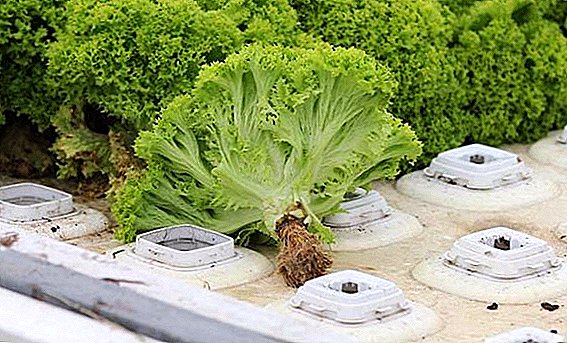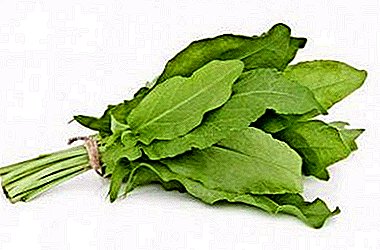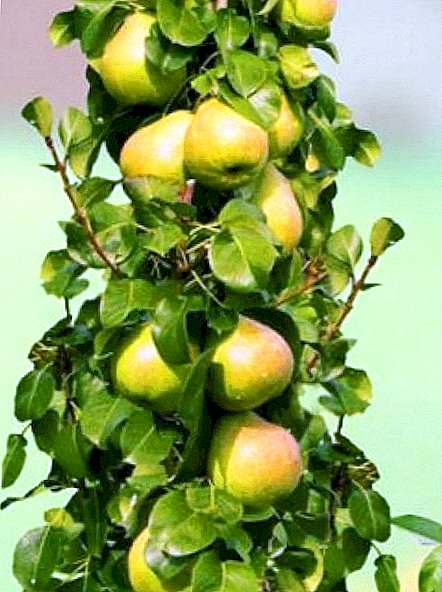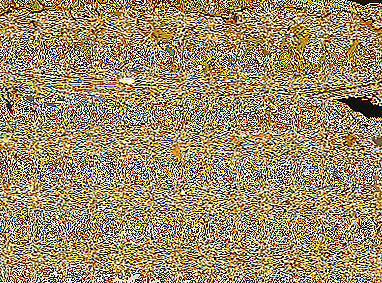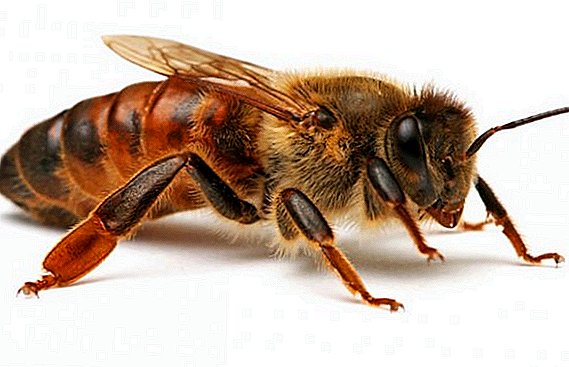 The bee can be called the queen of the hive. She is responsible for the main function that ensures the existence of the entire bee population, the continuation of the species and the maintenance of the viability of the offspring.
The bee can be called the queen of the hive. She is responsible for the main function that ensures the existence of the entire bee population, the continuation of the species and the maintenance of the viability of the offspring.
Each functional subspecies in the hive is responsible for a separate function. Drones are male individuals, adapted only for fertilization of the uterus.
Working bees, i.e., females, have an underdeveloped reproductive system, but their body is designed to collect nectar, pollen, extract wax and build honeycombs. The bee and unites all these interesting inhabitants of the hive, giving them a new life and development.
Description and functions
It is quite possible to find a little bee-maid in a hive, since it is larger than ordinary bees. The barren individual weighs about 170-220 mg, while the fetus weighs about 180-330 mg. The length of her body is 20-25 mm.
A distinctive feature of queens of different breeds is their coloring. Their belly resembles a torpedo, its shape is elongated and pointed.
A barren individual is harder to find, as it moves quickly, jumping over the honeycomb. But the fetus, on the contrary, is slow, difficult to walk and visually becomes much larger.
She is surrounded by other bees that care for her and provide royal jelly. Below is the queen bee.
One of the most valuable bee products is honey. It can be of different types, for example, buckwheat, lime, phacelia, rapeseed, chestnut, acacia, acacia, coriander, white.
 In addition to procreation, the bee-woman is also responsible for one more important function. She unites her swarm into one with the help of a special mother substance, which is allocated only from her.
In addition to procreation, the bee-woman is also responsible for one more important function. She unites her swarm into one with the help of a special mother substance, which is allocated only from her.
This substance is then distributed between all the inhabitants of the hive, with the result that they have the same smell. This helps the protection to distinguish between "their" and "strangers."
The main types of queens
Depending on the method of breeding the maternal individual, several of its species are distinguished. Consider the features of each of them.
Did you know? To get 1 kg of honey, the bees make about 4,500 missions and collect nectar from 6-10 million flowers. A strong family can collect about 5-10 kg of honey per day.
Quiet shift
The uterus of the quiet shift begins to withdraw in three cases:
- if such a change was intentionally provoked by a beekeeper;
- in the hive, where the uterus is already old;
- if the individual has been damaged.
Bees continue to work actively, collect nectar and pollen, build honeycombs. This clearly indicates that the queen was just a quiet shift. They are always of the best quality and exceed the size of the fistulous and swarm.
After 16 days, a new young individual comes out of this queen cell and kills the old one. Life in the hive continues to take its course until the next quiet shift.
In addition, each species of bees differently refers to this method of removing a new uterus. Some do this extremely rarely, others are able to make a shift annually.
Did you know? Bees have a unique ability to haul cargo over a rough surface that exceeds their own weight 320 times.

Fistulae
The fistula is removed in case of its unexpected injury, old age or the beekeeper’s negligence. Such an incident in a short time can stop the work of the entire hive, the bees will begin to show anxiety, make a noise like a howl.
The loss of the little bee makes them independently take out a new mother. Insects place eggs in the queen cells on bee sowing, where the development of a new queen bee occurs. Throughout the growing time they are fed with royal jelly.
After 16 days, juveniles appear, which are far from the best in quality. Bees release only one or two individuals from the queen cells, the most suitable in their opinion.
Then one of the queens destroys the other, and then all those remaining in the queen cells. This is how the fistula queen hive appears. 
Swarm
When the bee colony prepares for swarming, a period of hatching of swarm bees begins. Basically, they are gradually laid in the hives in the amount of 10-50 pieces.
The bee lays its eggs in special bowls, after which the process of their active cultivation takes place. These larvae feed a large number of royal jelly, providing them with the best care.
As a result, after 16 days, the individual turns out to be much better and larger fistulous. However, there is one global flaw, because a family with such a womb is prone to swarming.
Important! If, after the release of the first individual, it does not interfere in this process, then the probability of an exit of the whole swarm, which becomes aggressive and tends to leave the hive, is great.

Life cycle features
There are several stages in the development of the beekeeper:
- during the first two days the egg is in the womb of the maternal individual, then it is placed in a special bowl;
- on the third day the larva gets into the open state, it begins to be actively fed with royal jelly;
- on the 8th day, she returns to the bowl;
- till the 12th day it ripens to the state of a pupa;
- from the 13th to the 16th days is in a puppet state;
- The 17th is the day when the barren little bee comes out.
Important! In no case do not bother the hive during the period of maturation of the maternal individual, it can get scared, fly away and not find a way back, which will lead to its death.
The average lifespan of a bee-woman is 5 years. However, after 2 years of her life, her reproductive functions weaken, she lays fewer eggs and sows more drones than working bees.  With all this, the old bee-girl in the autumn period stops laying eggs before the deadline, and in the spring, on the contrary, later. All these factors have a strong influence on the strength of the bee offspring as a whole and on the amount of honey produced by it per season.
With all this, the old bee-girl in the autumn period stops laying eggs before the deadline, and in the spring, on the contrary, later. All these factors have a strong influence on the strength of the bee offspring as a whole and on the amount of honey produced by it per season.
Experienced beekeepers recommend changing the queens every couple of years. The best way in this case is a quiet change.
Conclusion beemaps
The process of withdrawal of queen bees at home may seem complicated and requires a lot of experience. However, knowing the basic principles and methods, it will be able to perform even a novice.
A beehive is a whole factory, which produces a large number of very useful products, among them: wax, pollen, propolis, zabrus, perga, royal jelly and bee venom.
Conditions
The withdrawal of new beemaps should be carried out only over a strong family, so that their quality is top notch.
Maintaining optimal growing conditions also plays a key role. The temperature in the queen cells should not be below + 32 ° C, and the humidity - 75-90%. This will help you aerothermostat, thanks to which such conditions are very easily provided.
Also, be sure to evenly distribute the queen cells throughout the family, this ensures a good feeding of royal jelly and balanced development.
A successful maternal breeding process is directly dependent on the strict observance of the time frame. Below is the queen bee hatching calendar, with which you can accurately track the phases of insect development. 
Process
Directly the process of maternal withdrawal itself involves the implementation of a sequence of actions:
- Pick up and prepare paternal families for maximum saturation of the drone individuals with the best males. This choice should be among the strongest and healthiest.
- Pick up and then assess the selected maternal families. They, like drones, must be of the highest quality, as they are responsible for the productivity and number of offspring, as well as for the success of the brood as a whole.
- Organize the selection and work with caregivers. There are several types of them: family educators with a brood of different ages without a uterus and with its presence, starter families without an open brood and a bee-woman, a family without a bee-woman and any brood. Choose a specific family based on the purpose for which you are maternal.
- The appearance of layering, the implementation of uterus fertilization and process evaluation. Pay particular attention to the analysis of the egg production of the uterus, productivity and efficiency of newly created families.
 Many beekeepers use replanting of queen bees, if a loss of the past individual has occurred or it has become weak to carry out its reproductive functions.
Many beekeepers use replanting of queen bees, if a loss of the past individual has occurred or it has become weak to carry out its reproductive functions.This method should be carried out only in good warm weather, especially during the abundant collection of nectar. The optimal time is spring and early July.
Tag
The search for maternal individuals can be quite long and time consuming. To facilitate this process, beekeepers use labeling on the body of a bee-woman with the help of markers of various colors.
It will also make it easier to keep track of her age, because we all know that the period of the mother’s highest productivity is the first 2 years of life. Tags also help in finding the swarm that has flown in, identifying the family with their unique queen.
Moreover, odd bees, oddly enough, cause greater confidence among buyers, who are sure that such individuals are much better than others. The queen bee is a truly unique creature capable of uniting thousands of others of its own kind, giving them life and being truly a “mother” whose loss the bees very painfully endure.
If you want to grow a successful family of these insects, pay the most attention and show maximum care to the mother individuals. The strength of the genus as a whole, the number of the hive and its productivity and viability depend on them.


